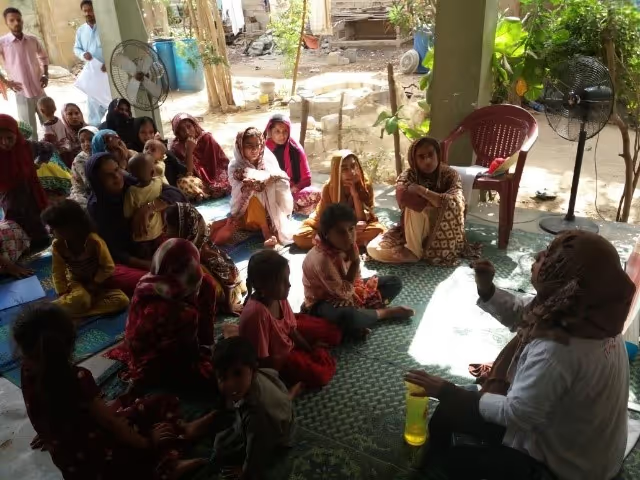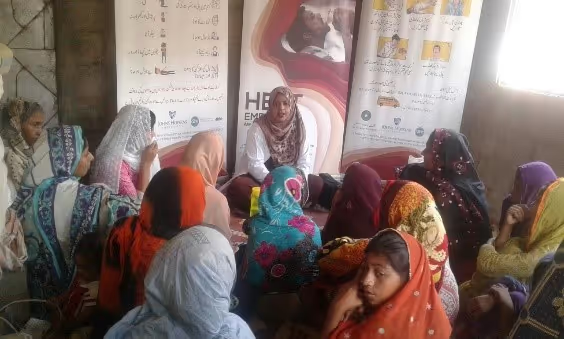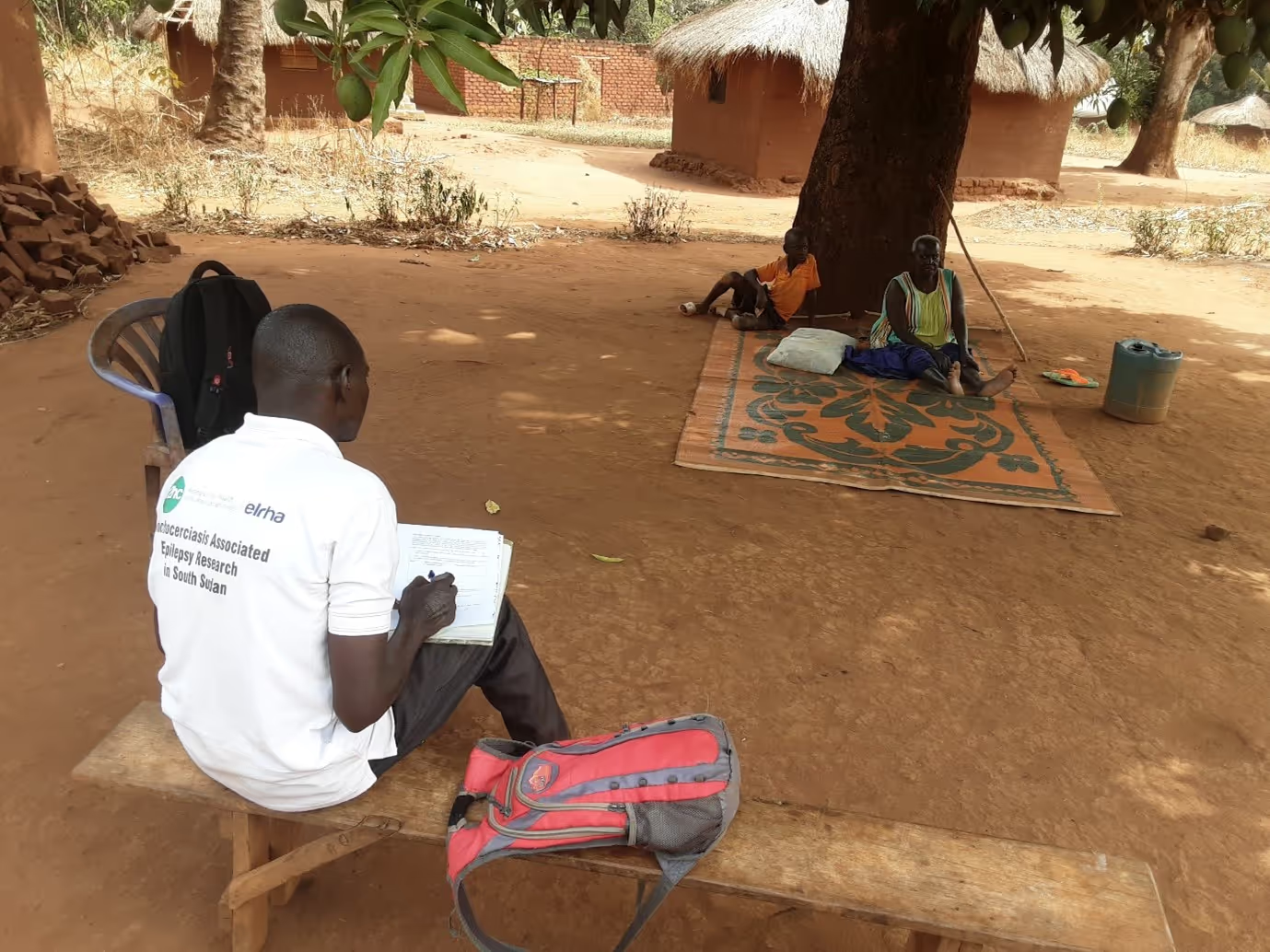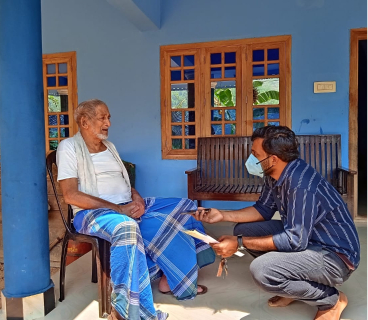Invisible Victims

Our project, “Heat Emergency Awareness and Treatment (HEAT)”, is focused on developing training and educational materials that will be implemented in hospitals and communities to increase awareness about heat-related illness (HRI) and to lower the incidence of HRI during heat waves. This is a two-arm study based in Karachi, Pakistan. One arm is within hospitals and the other arm in communities. As part of the study protocol, we surveyed four major hospitals and sixteen communities that have been impacted by heat waves to understand who is affected and who seeks treatment for heat exposure. Additionally, we conducted a literature review to get more information on community heat emergency prevention programs and methods of diagnosing and treating HRI. Our team noticed that the majority of the literature and the data on heat-related illnesses focused on males, specifically laborers, athletes, and the military. Few studies focused on HRI effects on women and children. It appears that women and children become the invisible victims of heat exposure.Our project, “Heat Emergency Awareness and Treatment (HEAT)”, is focused on developing training and educational materials that will be implemented in hospitals and communities to increase awareness about heat-related illness (HRI) and to lower the incidence of HRI during heat waves. This is a two-arm study based in Karachi, Pakistan. One arm is within hospitals and the other arm in communities. As part of the study protocol, we surveyed four major hospitals and sixteen communities that have been impacted by heat waves to understand who is affected and who seeks treatment for heat exposure. Additionally, we conducted a literature review to get more information on community heat emergency prevention programs and methods of diagnosing and treating HRI. Our team noticed that the majority of the literature and the data on heat-related illnesses focused on males, specifically laborers, athletes, and the military. Few studies focused on HRI effects on women and children. It appears that women and children become the invisible victims of heat exposure.

The community health workers who work for one of our partners, the Aman Foundation, go house to house to collect data from women about their families’ experiences with illness, symptoms of HRI, daily activity, and their living conditions. In the hospitals, data collectors from the Aga Khan University collect similar information from individuals in the waiting rooms. They are also able to gather information on patient diagnoses. There appear to be gender differences in the incidence of heat-related illness within communities. Data is still being collected and will shed more light on these differences. Our team has begun to hypothesize that many women are lost to hospital surveillance because many do not recognize the work in their home as risk behaviors for HRI. Women in urban communities often work over hot stoves in poorly ventilated homes with metal rooves. In addition, many communities face regular drinking water shortages. These increased exposures to heat, in addition to higher environmental temperatures, put women at higher risk for HRI. Additionally, we hypothesize that due to their responsibilities as caretakers of the children and the home, they are less likely to leave the home to seek care when they experience symptoms of heat exhaustion or heat stroke. They are more likely to attempt home remedies and self-treatment before seeking medical care.

During focus group discussions with community members we learned of the potential risks to children. Children are also vulnerable to HRIs merely by participating in regular day to day activities. Playing in the outdoors in direct exposure to the sun and walking to school can pose increased risks during heat waves. The focus group discussions also revealed barriers to care for women, and by extension their children. Women are not allowed to attend healthcare facilities on their own. This barrier and other difficulties with transportation, inadequate access to functioning healthcare facilities, and poverty make access to healthcare in times of emergency difficult.
As mentioned previously, there is little literature that examines heat exposures in the home. Those that do exist, focus on elderly homebound populations in high-income countries, who are at increased risk of extreme heat exposure during heat waves. The HEAT project’s community surveillance component provides us with a unique opportunity to assess the health impact of in-home heat exposure in low resource urban communities and to examine the disparities in healthcare access for women and children. It is also a great opportunity to increase the knowledge and awareness about populations within the home who generally are overseen in the context of heat-related illness.
Author: Chelsea Ducille, MSPH
Stay updated
Sign up for our newsletter to receive regular updates on resources, news, and insights like this. Don’t miss out on important information that can help you stay informed and engaged.
Related articles



Explore Elrha
Learn more about our mission, the organisations we support, and the resources we provide to drive research and innovation in humanitarian response.